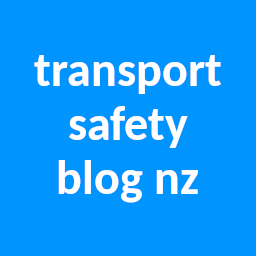UPDATE: TAIC has released a report on the incident which can be read here. The report cites a number of factors, the curve in the track to the north being the significant one; however it turned out that the company doing the work didn’t have a permit to occupy the rail corridor from Kiwirail, therefore this must be considered significant as the underlying cause of the issue.
At about 3:30 pm on Thursday 13 May, a level crossing accident occurred at Saunders Road, which is at 185.0 km on the North Island Main Trunk, therefore being 4.5 km north of Marton. The accident involved a truck and a southbound freight train and has resulted in the death of the truck driver.
Subsequently it emerged that the truck’s driver was a contractor painting road safety markings at the crossing. These include the “Stop” markings painted directly on the road itself approaching the crossing. The crossing does not have bells and lights, only stop signs. It is ALCAM Crossing 534 and sees about 18 trains a day and around 50 vehicles. Permitted train speed in the area is 110 km/h. Aside from the usual agency involvement, the Transport Accident Investigation Commission has sent investigators to the site of the accident, although it is not yet known if TAIC will do a full investigation and report.
Here is a screenshot from NZ Rail Maps Webmaps showing the location of the crossing.

Some possible avenues of investigation include:
The visibility that a vehicle would have of an approaching train.
- The crossing design is quite hazardous, in that for dubious reasons, the road turns to run parallel to the track for a distance when drivers are travelling from west to east. This would constrain the ability of drivers to see a train approaching from the south, although in this instance, the train was approaching from the north, so that this scenario does not apply.
- The line to the north of the crossing, which is relevant for this particular instance, goes through a curvature within a cutting. This could have the impact of reducing visibility of oncoming trains. The curve in this case starts within 200 metres of the crossing. At a line speed of 110 km/h, which equates to 30 metres per second, a driver might only get 10-20 seconds warning of an approaching train. A heavy truck and trailer which had stopped to check, starting off from standstill on a crossing like this, could well take more than that time to fully clear the crossing, and therefore be at risk of a collision if a train was around the curve out of sight and travelling at 110 km/h as it approached the crossing.
In other words, this crossing is hazardous, like so many others in New Zealand that are simply ignored by authorities.
However as the full facts of the case have not yet emerged it behoves us to consider other possibilities as well.
Whether the truck driver was in the rail corridor in the course of their work.
The Railways Act 2005 prescribes legislative requirements pertaining to access to the rail corridor, which are produced for safety reasons. The road marking process for a level crossing could well put the contractor’s vehicles in the rail corridor at various times. This then begs the question of whether Kiwirail safety protocols and procedures were followed by the company doing the road marking work. Since Kiwirail is not directly responsible for these markings, it is possible they did not have any input into the work being done on this road and therefore did not have direct awareness of the situation. This would then fall back on the roading authority, in this case Rangitikei District Council.
If TAIC becomes fully involved in the investigation they would probably look into the safety angle in particular as the work being done to paint markings on a road near a level crossing could well prove a distraction that would render a danger to a contractor from keeping a safe lookout for approaching trains. This of course is precisely the reason why Kiwirail has protection requirements that are supposed to be met for anyone working in the rail corridor.
